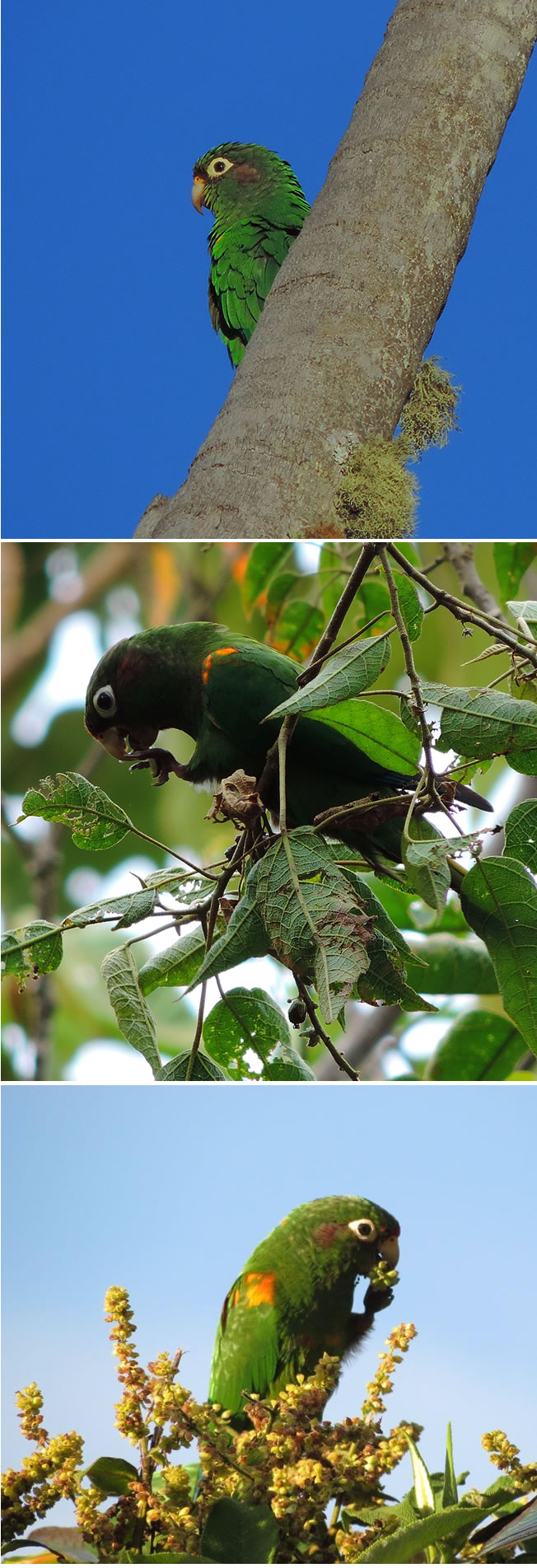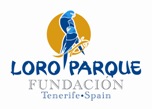During four days in December last year, were carried out counts of one of the most endangered parrot in Colombia, the Santa Marta Parakeet. It was conducted at two places in the Natural Bird Reserve El Dorado, places where the species is abundant and there is a healthy habitat for their development.
From 6 to 9 December at the Natural Bird Reserve El Dorado, located in the Sierra Nevada De Santa Marta the counts of the Santa Marta Parakeet (Pyrrhura viridicata) took placeat two points, La Cumbre and La Laguna, in these places both auditory as well as visual records were obtained of a group of 12 individuals.
In the upper part of the place known as La Cumbre they were recorded consuming fruits of an endemic shrub, The Santa Marta Salvia (Salvia Libanensis), this plant, which was fruiting, is consumed abundantly by these parrots and is very common in the area. Individuals were found on the road, inside the forest and among the palm vegetation.
Another important observation was recorded in the forest of two natural nests in Palmas de Ramo (Ceroxylon ceriferum).The vegetation surrounding the nests exhibits a heterogeneous composition, with the presence of patches of primary forest and some open areas of secondary vegetation in the presence of the same palm, the palm dominates everywhere the presence of this parakeet.
Also, species such as the Colombian pine (Podocarpus Oleifolius), Croton (Croton Sp), Sapium Stylare and bromeliads rooted in the substrate like (Tillandsia Tovarensis) account for much of the habitat of parakeet. The herbaceous vegetation is represented by Chusquea aff. tuberculosis, cedrillo (Brunelia Integrifolia) and niguito (Miconia Theaezans).
These monitoring activities and observations are of vital importance in the conservation processes developed in the reserves of ProAves because they provide information on changes in population size and help identify the causes of its decline, just as information is obtained from the routes they take and thus define their areas of interest and management.
The amount of data generated forms the basis for making decisions about the future and conservation of the parakeet and the conservation of forests in the Reserve. The results we have achieved have been population sizes, nesting seasons, plants they consume, nesting habitat and above all we have identified that the Natural Bird Reserve E Dorado provides the ideal habitat for this parakeet threatened with extinction.
Supported by



